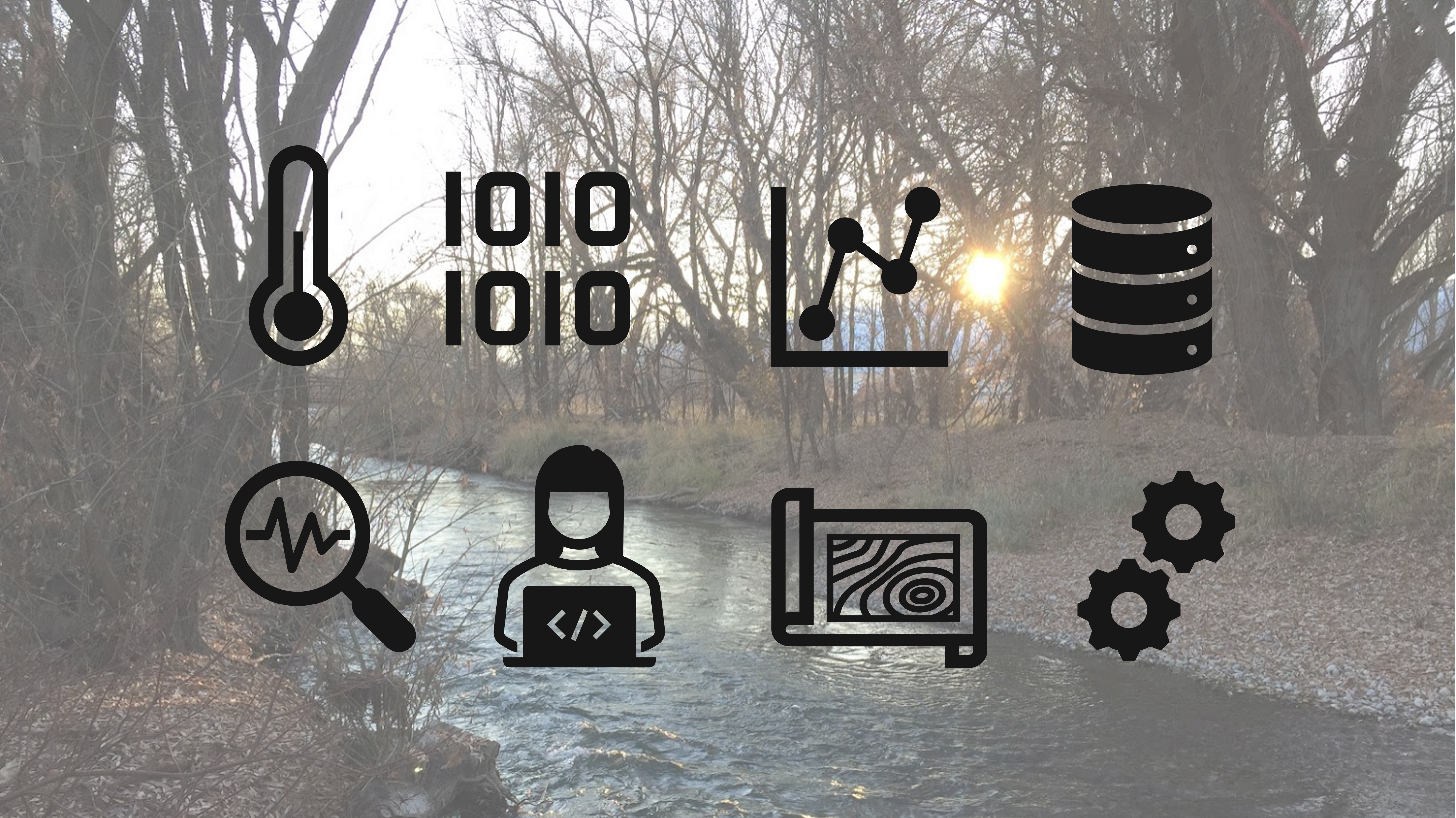Hydroinformatics and Water Data Science
USU

About this Course
Hydroinformatics involves the study, design, development, and deployment of hardware and software systems for hydrologic data collection, distribution, interpretation, and analysis to aid in the understanding and management of water in the natural and built environment. The modules contained in this course introduce fundamental and advanced hydroinformatics concepts and procedures including web based data distribution and access using web services, data collection networks, data quality control, relational databases and data management software, metadata, data transformations and automation of data manipulation tasks to support modeling and analysis, and machine learning applications in hydrology and water science.
The modules published here are designed for instructors to tailor to their own course offerings. The datasets and code are available for reuse and adaptation. Topics, technologies, and tools of emphasis were selected based on input and feedback from other Hydroinformatics instructors as well as our own expertise and datasets. Additional modules may be added. We also invite other instructors to share and collaborate with their own materials.
Topics Covered
Module topics are: programmatic data access through web services, sensor data life cycle and data quality control, relational databases and SQL querying, and introduction to machine learning classification. Each module includes code examples that are instructive for manipulating and visualizing data in Python.
Prerequisites
These modules assume some familiarity with the basics of coding in Python.
Learning Objectives
The learning objectives for this course include:
1. Describe the data life cycle
2. Discover and retrieve data from major data sources
3. Store, retrieve, and use data from data models used in water sciences
4. Query data with Structured Query Language
5. Create reproducible data visualizations
6. Write and execute computer code to automate data related tasks
7. Organize data in platforms and systems common in water sciences
More specific learning objectives are defined for each individual module.
Target Audience
This course is designed for instructors to adapt modules to graduate level courses in Hydroinformatics and Water Data Science.
Tools Needed
This course uses Python for coding examples. Examples are executed in online Jupyter notebooks.
Expected Effort
The developers estimate that this course will take between 4 to 12 hours to complete depending on the depth of instruction and whether the assignments are completed.
Course Sharing and Adaptation
This course is available for export by clicking the "Export Link" at the top right of this page. You will need a HydroLearn instructor studio account to do this. You will first need to sign up for a hydrolearn.org account, then you should register as an instructor by clicking 'studio.hydrolearn' and requesting course creation permissions.
If you adopt or adapt these materials, please make sure you cite the source of your new course. In HydroLearn, you can include this citation on an "Adaptation Page" of your new course, in your course card, or in the introduction section of your new course.
Recommended Citation
Jones, A.S., Horsburgh, J.S., Bastidas Pacheco, C.J. (2022). Hydroinformatics and Water Data Science. HydroLearn. https://edx.hydrolearn.org/courses/course-v1:USU+CEE6110+2022/about
